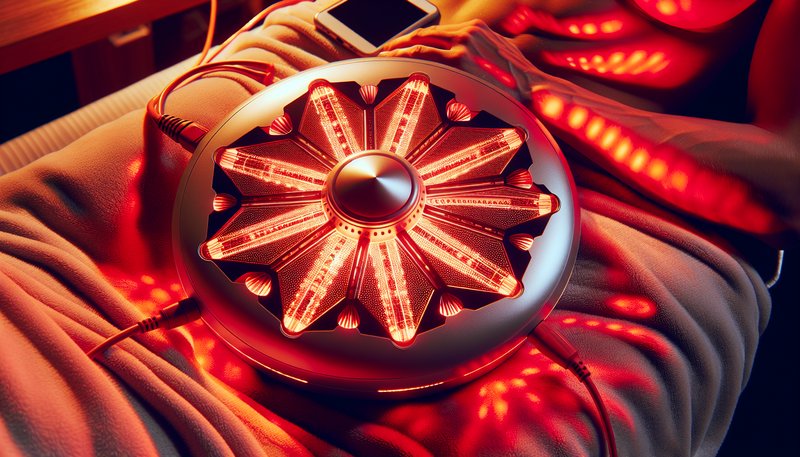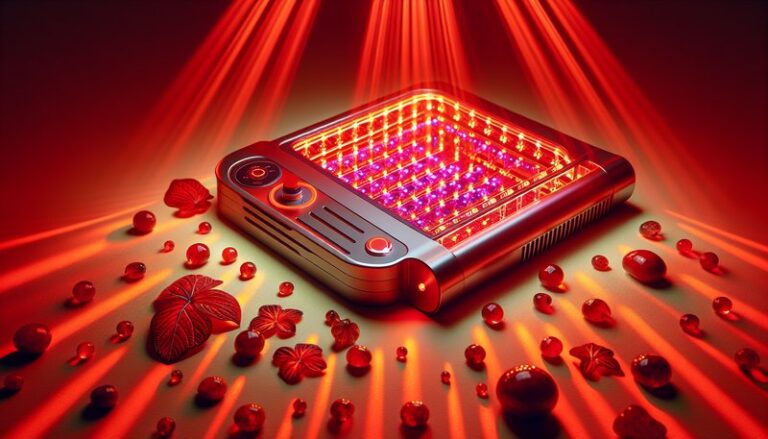Can Red Light Therapy Help Nerve Pain?
Is nerve pain interfering with your quality of life?
Find out our perspective on Can Red Light Therapy Help Eczema?
In this article, we will explore the potential benefits of red light therapy for managing nerve pain. We will delve into what red light therapy is, how it may alleviate discomfort, the advantages and disadvantages of this treatment, and alternative options available. By the end, you will have a comprehensive understanding of whether red light therapy might be a suitable choice for you.
Key Takeaways
- Red light therapy may help reduce inflammation and promote nerve regeneration.
- The treatment is generally considered safe with minimal side effects.
- Alternative therapies and lifestyle changes can also contribute to pain relief.
What is Red Light Therapy?
Red light therapy (RLT), also known as low-level laser therapy (LLLT), involves the use of specific wavelengths of light to penetrate the skin and tissue. This non-invasive treatment aims to promote healing and reduce inflammation by stimulating cellular processes.
RLT utilizes wavelengths between 600 to 1000 nanometers, which can penetrate the dermal layers. The light energy is absorbed by cells, promoting increased ATP (adenosine triphosphate) production, which is crucial for energy transfer in cellular processes. This treatment has been studied for various conditions, including skin ailments, joint pain, and nerve pain.
What are the Benefits of Red Light Therapy?
The following benefits provide insights into how red light therapy can help manage nerve pain effectively.
Reduction of Inflammation
Reducing inflammation is a key mechanism through which red light therapy may alleviate nerve pain. Studies have shown that RLT can decrease pro-inflammatory cytokines, thereby helping to lessen swelling and discomfort.
Promotion of Nerve Regeneration
Research suggests that red light can stimulate the repair and regeneration of nerve cells. This is particularly beneficial for individuals experiencing neuropathy due to injury, diabetes, or other conditions, as enhanced healing can promote recovery.
Improved Blood Circulation
RLT can enhance blood flow to the affected nerves by stimulating the formation of new capillaries. Improved circulation provides essential nutrients and oxygen to the tissues, which aids in the healing process and may reduce pain levels.
Minimal Side Effects
One of the significant advantages of red light therapy is that it is generally safe and well-tolerated with few side effects. Most individuals experience no discomfort during treatment, making it a viable option for patients seeking non-invasive therapies.
Convenient Home Use
With the availability of portable red light therapy devices, users can perform treatments in the comfort of their own homes, improving accessibility and adherence to therapy.
Is it Possible to Use Red Light Therapy for Nerve Pain?
Yes, red light therapy can be used as a treatment for nerve pain. Its safety and efficacy have made it a popular option among patients seeking alternative or complementary methods for pain management.
What are the Advantages of Using Red Light Therapy for Nerve Pain?
The advantages of opting for red light therapy include:
Non-Invasive Treatment Option
Red light therapy offers a non-surgical alternative to traditional pain management methods, making it appealing for those who prefer to avoid invasive procedures or medications.
Complementary Pain Relief
RLT can complement other treatments, allowing individuals to combine therapies for enhanced pain relief. This approach may lead to better overall outcomes in managing nerve pain.
Accessible and Affordable
With advancements in technology, red light therapy devices are becoming more affordable and accessible for home use, allowing more individuals to benefit from this therapy.
What are the Disadvantages of Using Red Light Therapy for Nerve Pain?
While there are several advantages, it’s essential to consider potential disadvantages:
Variable Results
The effectiveness of red light therapy can vary from person to person. Some individuals may experience significant relief, while others may notice little to no improvement.
Requires Consistency
For optimal results, red light therapy often requires regular sessions. This commitment may be challenging for some individuals to maintain.
Limited Research
While there is promising research regarding RLT’s effectiveness for nerve pain, more clinical studies are needed to establish definitive conclusions regarding its efficacy and mechanisms of action.
What are the Things to Consider Before Using Red Light Therapy?
Before initiating red light therapy, there are several critical considerations to keep in mind.
Consultation with Healthcare Provider
Always consult with a healthcare professional before beginning any new treatment. They can provide personalized recommendations based on your specific condition and medical history.
Type of Device Used
Different devices emit varying wavelengths and power levels. Ensure you use a well-reviewed, high-quality device designed for pain relief to maximize potential benefits.
Duration and Frequency of Treatment
Optimal treatment strategies, including duration and frequency, are crucial for maximizing effectiveness. Following guidelines provided by your provider or the device manufacturer is essential.
Individual Health Conditions
Consider any underlying health conditions that could affect treatment outcomes or potentially contraindicate red light therapy, such as certain medications or skin sensitivities.
What are the Alternatives to Red Light Therapy?
If red light therapy does not seem appealing or effective, consider these alternative options for managing nerve pain.
Physical Therapy
Physical therapy can help improve mobility and address underlying musculoskeletal issues contributing to nerve pain. A trained therapist can devise a tailored program to strengthen and stabilize areas of concern.
Acupuncture
Acupuncture is an ancient healing practice that may alleviate nerve pain by stimulating specific points in the body. Many individuals report improvements in pain levels and overall well-being after acupuncture treatments.
Medication Management
Over-the-counter pain relievers, prescription medications, or topical treatments may be beneficial for some individuals in managing nerve pain. Discussing options with a healthcare provider can help determine the best course.
Lifestyle Modifications
Incorporating lifestyle changes such as regular exercise, healthy diet, stress management techniques, and adequate sleep can significantly impact nerve pain levels over time.
Conclusion: Is it Recommended to Use Red Light Therapy for Nerve Pain?
In summary, red light therapy presents a promising avenue for individuals dealing with nerve pain, offering several benefits, including inflammation reduction and promoting nerve regeneration. However, it’s important to weigh the pros and cons, considering individual responses and therapy consistency. Always consult with a healthcare professional before starting treatment to determine whether red light therapy is right for you.
Frequently Asked Questions
What conditions can red light therapy treat?
Red light therapy has shown potential benefits for conditions like arthritis, muscle pain, nerve pain, skin conditions, and even hair loss. However, scientific backing varies by condition, so it’s essential to consult a professional.
How long does a red light therapy session last?
Typically, a red light therapy session can last anywhere from 5 to 30 minutes, depending on the area being treated and the device used. It’s advisable to follow specific guidelines for the device or technique being employed.
How often should I use red light therapy?
For optimal results, most practitioners recommend sessions from 2 to 5 times per week. Consistency is key to achieving desired outcomes.
Are there any side effects of red light therapy?
Red light therapy is generally considered safe with minimal side effects, though some individuals may experience mild skin irritation or photoburn if they overuse the therapy. Always adhere to manufacturer guidelines.
Find all the details in Is Red Light Therapy Eye-Safe?
Can I use red light therapy at home?
Yes, home devices for red light therapy are available and can be effective. However, it’s crucial to choose a reputable product and adhere to treatment protocols for best results.






